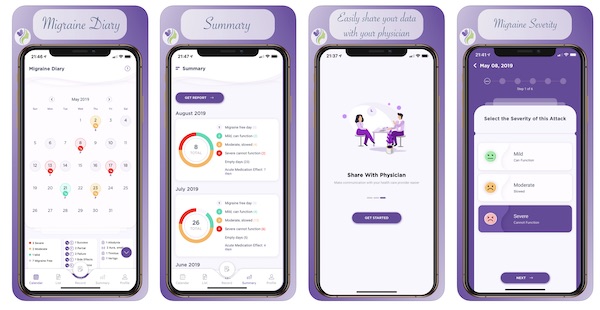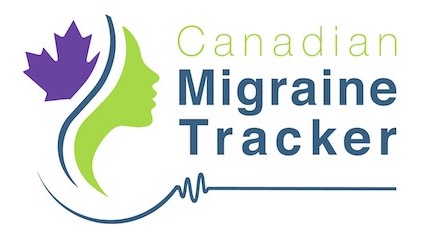How to use a Migraine Diary
«Migraine is invisible on an MRI…but it is very visible on a diary»
Let’s face it, monitoring migraine is important. During your migraine journey, you will try different treatments, and it will be very important to observe what is going on. Of course, if you benefit from a 75% improvement, it will be obvious. But sometimes, success depends on a detailed observation guiding the treatment.
Believe our experience: a headache diary is a key to a successful migraine management. It does not have to be time consuming. It’s a habit to adopt.
See this post, and this post.
Paper or App?
Consider using the Canadian Migraine Tracker App (available on iOS and Android, French and English). It has been designed by Canadian physicians to make things simple for you.

Another popular app is Migraine Buddy. It gets very good scores online. But it also has limitations. Many people find it too time consuming and detailed. Also, it is not always easy to see the results in a friendly format for the physician.
A paper diary is also recommended by headache specialists, and each clinic may have their own, with slightly different instructions. Paper diaries are visually easy to review and are very flexible as you can add written notes. You can also track easily the monthly patterns.
List of elements you could monitor

Attack frequency:
The simplest way to record this is to use a 0-1-2-3 approach. The 1-10 scale used for pain is not that helpful for migraine and it’s difficult to summarize. We propose the following approach, based on the overall impact of the attack on your function.
- 0 is a headache free day. Some call those «crystal clear» days. If you have chronic migraine, maybe you don’t have many of those, so it’s important to record them.
- 1 is a mild attack. It may be a mild headache, or other mild symptoms, but you can function. Acute treatment is not always essential at this stage.
- 2 is a moderate attack: your function is slowed. Acute treatment is usually needed.
- 3 is a severe attack: you cannot do much and may be bedridden. Usually there are prominent migraine symptoms and severe pain. Acute treatments may fail.
Aura: if you do experience auras (visual, sensory, speech or even weakness) you can track them. See this post
Other symptoms: it may be helpful to watch other symptoms such as vertigo attacks (vestibular migraine), vomiting (severity marker), or others.
See this post, and this post
Menstrual periods: essential for women as it will help to diagnose menstrual migraine and guide therapy.
See this post, and this post
Acute medication use: did you take something to treat the attack? What did you use? This is important to observe your pattern of use and also watch for overuse.
See this post, and this post
Efficacy of acute medications: if you try different acute treatments for migraine, you will need to see which works and for what type of attacks. Does the strategy work or fail?
Current preventives on board: over a year, it may be difficult to remember what the situation was like with preventive A or B. Keeping track of the preventives helps you making decisions.
Lifestyle habits: are you trying mindfulness? Or maybe an exercise program? Track your sessions on your diary. It’s motivating and will allow you to see if there’s an impact on your migraines.
See this post, and this post
Any other that may be helpful: every person with migraine way want to track a very specific thing, an activity, a symptom.
What about triggers?

We find that it’s very difficult to track triggers as there are many of them, and they tend to accumulate. Tracking triggers in detail may increase anxiety and even…trigger migraine. For people interested in a detailed analysis of triggers, we recommend the N-1 Curelator App. Once the observation on triggers is done, it is best to focus on protective behavior or «migraine friendly lifestyle».
Will I keep a diary for the rest of my life?
Of course not. The diary is a tool. It should be worth your time and effort. It is essential during the treatment trial periods, but once you reach a more stable zone, the diary can be stopped. If things go unstable again, restart.
Whatever you chose to do, bring the results to your appointment!
Post#5
Categories
THE MIGRAINE TREE
- BRANCHES
- ACUTE TREATMENTS
- DEVICES AND NEUROMULATIOIN
- PREVENTIVE TREATMENTS
- PROCEDURES AND INJECTIONS
- SELF-CARE AND LIFESTYLE
- SOCIAL LIFE
- TRUNK
- ROOTS
OTHER CATEGORIES





